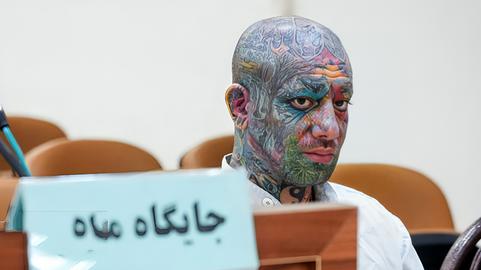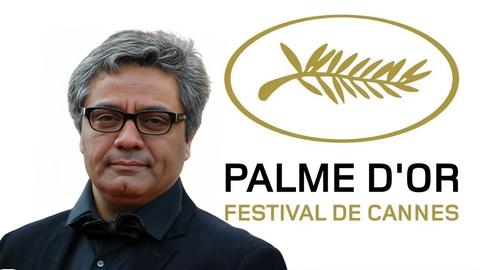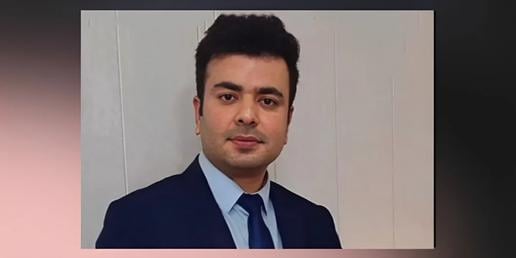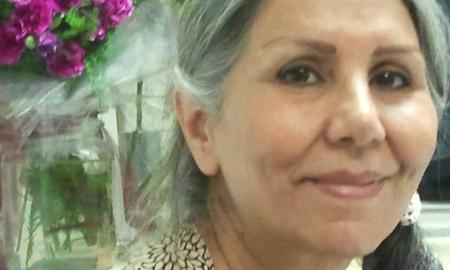
Rosewater hit theaters across the United States and Canada on November 14. The film, Jon Stewart’s directorial debut, tells the powerful story of Maziar Bahari, the Iranian-Canadian filmmaker and journalist jailed during the Green Revolution protests in 2009, and the campaign to free him. Rosewater is based on Bahari’s memoir, Then They Came For Me.
“My first reaction was, this was what we were afraid was going to happen,” says Nisid Hajari, Newsweek’s foreign editor at the time of Bahari's arrest. “I felt a responsibility to coordinate a response — it was our obligation to try to get him out, using all our resources.”
Over his 118-day incarceration, Bahari’s family and colleagues campaigned for his release, appealing to diplomats, politicians and media around the world to do their part. Led by Bahari’s wife and Newsweek, which accredited Bahari to cover the election, a committed group of campaigners and journalists worked in the public eye and behind the scenes.
But what lessons can we take from the “Rosewater campaign”? How would such a campaign work today? Can efforts to free Bahari in 2009 be replicated now to free imprisoned journalists today, in Iran and elsewhere? Jo Glanville, editor of Index on Censorship magazine at the time of Bahari’s arrest and part of the campaign to free him, says that what Newsweek did should be a “model” for other media outlets — it is this kind of total commitment and willingness to go to great lengths that is needed to help journalists today.
Bahari, played by Gael García Bernal in the film, arrives to a Tehran buzzing with the hope of change. He visits the ordinary neighborhoods where Mir-Hossein Mousavi’s reformist message is taking hold; and after the election, with widespread allegations of vote-rigging by the government, Bahari documents the protests and the authorities’ brutal response. He was arrested on 21 June and sent to Tehran’s Evin Prison, where he spent four months in solitary confinement, subjected to repeated interrogations and forced to confess. The film’s title refers to the cologne worn by Bahari’s interrogator.
“We decided to adopt a multi-pronged strategy,” says Bahari's former colleague and editor, Nisid Hajari. “It was about working through whatever contacts we had and others had in Iran, whether it was in the Intelligence Ministry or other ministries. That was something that needed to be done quietly. Then there was the public campaign. It seemed pretty obvious that going out and trying to berate the Iranians wasn’t going to help. But we did know that they were sensitive to public opinion. The petition was a way to get high-profile people who would get a lot of attention around the world involved — who weren’t necessarily political people. This was a very international list of people. There were artists and filmmakers and writers — they couldn’t be tarred as Western stooges.”
The Case of Jason Rezaian
At the beginning of November 2014, Iranian human rights chief Mohammad Javad Larijani told the Euronews TV channel that Jason Rezaian, who was arrested in July with his wife, Yeganeh Salehi, also a journalist, could be released “within a month”. It was a statement later refuted by Hadi Sadeghi of the cultural affairs department of the judiciary. Government officials are no doubt working behind the scenes to secure Rezaian’s release. But would a public-facing campaign have an impact on his case? In a climate where hardline politicians are thought to be using the journalist’s case and other recent events to destabilize the Rouhani administration’s international diplomatic strategy — particularly nuclear negotiations — it is difficult to tell.
The campaign to free Rezaian has been persistent, but certainly less visible. The family of the photojournalist arrested at the same time as Rezaian and Salehi asked for her name not to be published.
Thinking back to Bahari’s campaign, The Daily Beast’s Christopher Dickey, who was a Newsweek editor in 2009, says, “What the hell is being done for Jason Rezaian right now? Why are we not seeing his name every time we turn on the TV? Why is there not at least one line in every article about the nuclear negotiations? He’s way down the priority list. Maybe they’ll talk to the Iranians on the sidelines about Islamic State. But are they going to talk about Jason?”
This time, there are no full page adverts in newspapers, though the state department, human rights activists and the media — including the Washington Post, which Rezaian works for — have repeatedly called for his release.
Recently, the family has become more vocal. On October 30, Rezaian’s 100th day of imprisonment, his family released an online statement calling for Iranian authorities to release him. The family also referred to Rezaian’s arrest as a “farce”. A state department spokesperson called for his release on the same day, and media reports on the statements went some way towards ensuring the Iranian-American’s plight did not get buried in other Iran-focused news, such as nuclear negotiations. Yet it is these negotiations and the Rouhani administration’s attempt at multiple balancing acts that may well be having a detrimental — or at least distracting — impact on his case.
Other dual-nationality journalists currently held in Iranian prisons include Saed Malekpour and Roya Saberi Negad Nobakht. And of course, there are dozens of Iranian media workers currently behind bars — according to the Committee To Protect Journalists, there are at least 35 journalists in prison in Iran. It is a tense political climate for President Rouhani, who faces an influential wall of hardline opposition, but also in terms of Iran’s interaction with global leaders, so it is dificult to know what will work to secure the release of journalists.
“In many ways, it’s a different world today,” says Hajari. “First of all, this [kind of public campaign] works in the case of a journalist arrested by a government that is a member of the UN and has links to the outside world. It’s not going to work with Islamic State. So it’s very specific.”
“From our perspective, we could not allow for this to go on for one more day because we didn’t know what was happening.”
Is the Iranian government still sensitive to public opinion? Speaking about Bahari’s case, Hajari , who now works for Bloomberg, says, “They [the regime] thought with Maziar in particular that — with the Green Revolution — that they had something vital at stake here and they weren’t about to let this guy go.” But today, with the Green Revolution a distant memory for much of the international media, these kinds of political stakes are less common, or at least less obvious.
“When you look at the kinds of journalists who are going out to cover conflict zones now, they don’t have the backing, a lot of them, of an organization like Newsweek, which was also backed by the Washington Post at the time.” says Hajari. “Companies are using freelancers. A lot of times they don’t have the legal obligations to go to this extent. We had the luxury of not having to worry about this. We had the obligations, and the resources to back it up.”
So it is not only the political climate that has a marked influence on how journalists are treated and supported, it is an economic one too. Strapped by changing business models and ever fiercer competition from a rapidly burgeoning media landscape, the newspapers simply cannot support foreign correspondents the way they once did.
A Model for Change
But the campaign tactic of getting the message out — in as many ways possible and to as many people as possible — is nothing new, and can undeniably be supported through online initiatives more effectively than ever. The Iranian government, clergy and officials are widely known to be active users of social media and technology. In theory, the tools to make the Iranian government listen are available to almost everyone.
Listening to those who drove the campaign to free Bahari, including Christopher Dickey, it is easy to believe that a public campaign is key: shout from the rooftops, plead with media outlets to cover the story, constantly raise the issue with diplomats, international NGOs or journalists. But know that the public voice is not always heard: take the highly publicized case of Reyhaneh Jabbari, executed last month, to the horror of rights campaigners and ordinary people everywhere.
In a week when officials from the judiciary have agreed in principle to allow international observers into the country to assess the human rights situation, there is good reason to believe that the Iranian government is listening. UN Special Rapporteur Ahmed Shaheed has repeatedly asked for the UN to be allowed into the country. Campaigners for Bahari’s release refused to be silent, demanding the Iranian government take them seriously. A film like Rosewater is a reminder of the brutality of the regime, but also that there are people behind the system, like the troubled interrogator tasked with Bahari’s case. And here there is some hope, however dim, that minds — and policies, even laws — might be changed.






















comments